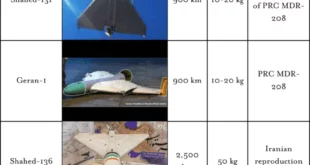The extremist group was supposed to have lost its last scrap of territory in Syria in March 2019, but in recent months it has ramped up attacks against regime forces, especially in the east of the country bordering Iraq.
US forces in Syria are focused on fighting the remnants of ISIS and are not guarding oil fields as previously ordered by ex-president Donald Trump, a US defense official said Monday.
Since a US firm contracted last year with the Kurds in northern Syria to help exploit north-eastern Syria oil reserves, US troops are not involved, said Pentagon spokesman John Kirby.
The 900 US military personnel and contractors in the region “are not authorised to provide assistance to any other private company, including its employees or agents, seeking to develop oil resources in Syria,” said Kirby.
The only exception is when US troops in Syria are operating under existing authorisations to protect civilians, he said, which could explain the continuing presence of US forces around the area of the oil fields.
“It’s important to remember that our mission there remains to enable the enduring defeat of ISIS,” he said, referring to ISIS.
The shift is more a change in tone by the new US President Joe Biden from Trump’s policy for the decade-old Syrian civil war.
The main oil fields are in territory in the country’s north-east, a region where the US-allied Kurdish Syrian Democratic Forces hold sway and depend on the oil for income.
In 2019, after the Syria-Iraq ISIS “caliphate” was crushed by US and allied forces, Trump declared that US troops would mostly withdraw from the country, leaving behind a residual force to “protect” the oil.
US officials said at the time that they were there to prevent the oil fields from falling into the hands of extremists.
The next year a previously unknown US oil company, Delta Crescent Energy, signed a deal with the Kurds to exploit the oil deposits.
The Pentagon’s statements come as ISIS is showing signs of resurgence despite previous assurances by the US and the rest of the anti-ISIS coalition that the extremist group’s threat has been largely contained.
The extremist group overran large parts of Syria and Iraq and proclaimed a cross-border “caliphate” in 2014, before multiple offensives in the two countries led to its territorial defeat.
The group lost its last scrap of territory in Syria in March 2019, but in recent months it has ramped up attacks against regime forces, especially in the east of the country bordering Iraq.
— Signs of resurgence —
ISIS ambushed a regime convoy in eastern Syria Monday, killing at least 26 fighters, including seven Syrian troops, a war monitor said.
The Britain-based Syrian Observatory for Human Rights said the early morning ambush in the province of Deir ez-Zor came as the convoy combed the area for jihadists, after a string of recent attacks.
“Violent clashes between the two sides led to large human losses,” it said, calling the toll from fighting the “largest since the start of the year.”
Observatory head Rami Abdel Rahman said at least seven of the 26 killed were Syrian troops, while the remaining casualties were mostly Syrian militia fighters.
At least 11 ISIS jihadists were also killed, the Observatory added.
Last week, ISIS killed 19 Syrian regime fighters and allied militia forces in central Syria.
And in December, nearly 40 Syrian troops were killed when ISIS ambushed a bus carrying soldiers travelling home for the holidays.
The desert area in Deir ez-Zor province provides a “safe haven” for jihadists planning attacks on regime forces and other rivals, the United Nations said in a report published this month.
ISIS retains some 10,000 active fighters in Iraq and Syria, although the majority are reported to be in Iraq, the UN has said.
 Eurasia Press & News
Eurasia Press & News


